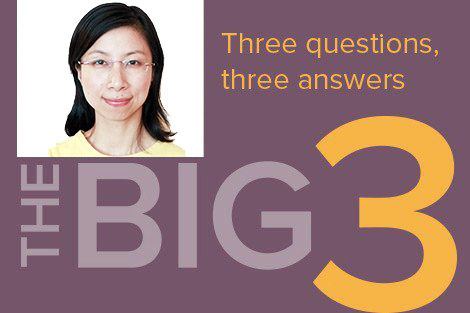July 20, 2020—Julia Wu, research scientist in the Department of Epidemiology at Harvard T.H. Chan School of Public Health and head of the Human Immunomics Initiative’s analytics core, co-authored a recent essay on vaccine confidence in the time of COVID-19. She also directed and co-taught the School’s new interdepartmental course Global Epidemiology of Vaccines and Vaccination during the spring semester.
What are the drivers behind vaccine hesitancy, and what can be done to address it?
Some of the recent hesitancy around the MMR (measles, mumps and rubella) vaccine can be blamed on the internet. Andrew Wakefield’s faulty paper linking the vaccine to autism was retracted ten years ago, but there still are narratives being shared online expressing safety concerns. But saying vaccine hesitancy is just about safety understates the issue.
My co-author Emily Harrison, a postdoctoral fellow in epidemiology and the history of science at Harvard University who was one of the guest lecturers for the vaccines course, and I believe that public trust is a key factor in vaccine confidence. If people don’t have trust in health authorities, it doesn’t matter how safe and effective a vaccine is. They are less likely to accept it. We have seen this even in research on university students studying health care. Simply giving people more information is not enough to change their minds.
One of the methods that has been successful in improving local vaccine confidence is peer learning and creating environments where people feel comfortable talking to each other about their concerns. In our paper, we propose that policymakers and the public health community consider ways to promote widespread public trust, in part through fostering narratives in communities around social solidarity. We are seeing some of this during the COVID-19 pandemic. People may want the freedom to not wear a mask, but many do it to protect vulnerable people and frontline health care workers. They are willing to make sacrifices. Furthermore, we propose that narratives of care be used to guide our public policy actions, and that social solidarity should be backed with social and economic power. The recent successful Ebola vaccine trials in West Africa demonstrated that comprehensive work within communities to gain trust can indeed make a difference in improving vaccine confidence.
Are you concerned about hesitancy toward a COVID-19 vaccine?
I am indeed concerned. We might expect that people would be more open to trust, given the severity of the pandemic. But a foundation of public trust and social solidarity needs to be there for it to be widely accepted. If a COVID-19 vaccine comes out at an unprecedented speed, people will need to trust that it has enough safety and efficacy. Furthermore, in the unfortunate event of post-licensure toxicities, the consequence will seriously deteriorate the relationships involved in vaccine confidence and have a catastrophic effect on routine childhood vaccination programs.
You began your vaccines course in January. How did you incorporate emerging knowledge about COVID-19?
Early in the course, we initiated a discussion on COVID-19 with students on how bad it would get based on the infectious disease epidemiology principles we introduced, and disseminated important epidemiological reports from the China CDC and the WHO. It was a very active moment of the course, and students reached out to us for additional information.
We were fortunate to have Jaap Goudsmit, adjunct professor of epidemiology and immunology & infectious diseases and chief scientific officer at both the Human Vaccines Project and HII as our primary instructor. He had decades of academic and industry experiences on development of many vaccines including the SARS vaccine. I worked with him to change the course on the fly as new information about COVID-19 came in every day. Jaap spent one session sharing with the students his hands-on experiences on the SARS vaccine and how the work might be applicable to COVID-19. One of our guest lecturers, Marc Lipsitch, professor of epidemiology and director of the Center for Communicable Disease Dynamics, changed his lecture from a general overview of vaccine efficacy estimation to an interactive case study on COVID-19. Toward the end, we took students through each step of designing and manufacturing a COVID-19 vaccine. They were able to come away with realistic timelines for a COVID-19 vaccine. They told us that they really valued gaining these insights, and many shared them with their friends, families, and communities.
We will offer this course again next year, during the Spring 1 term. Hopefully by then we will have a successful COVID-19 vaccine to discuss.
